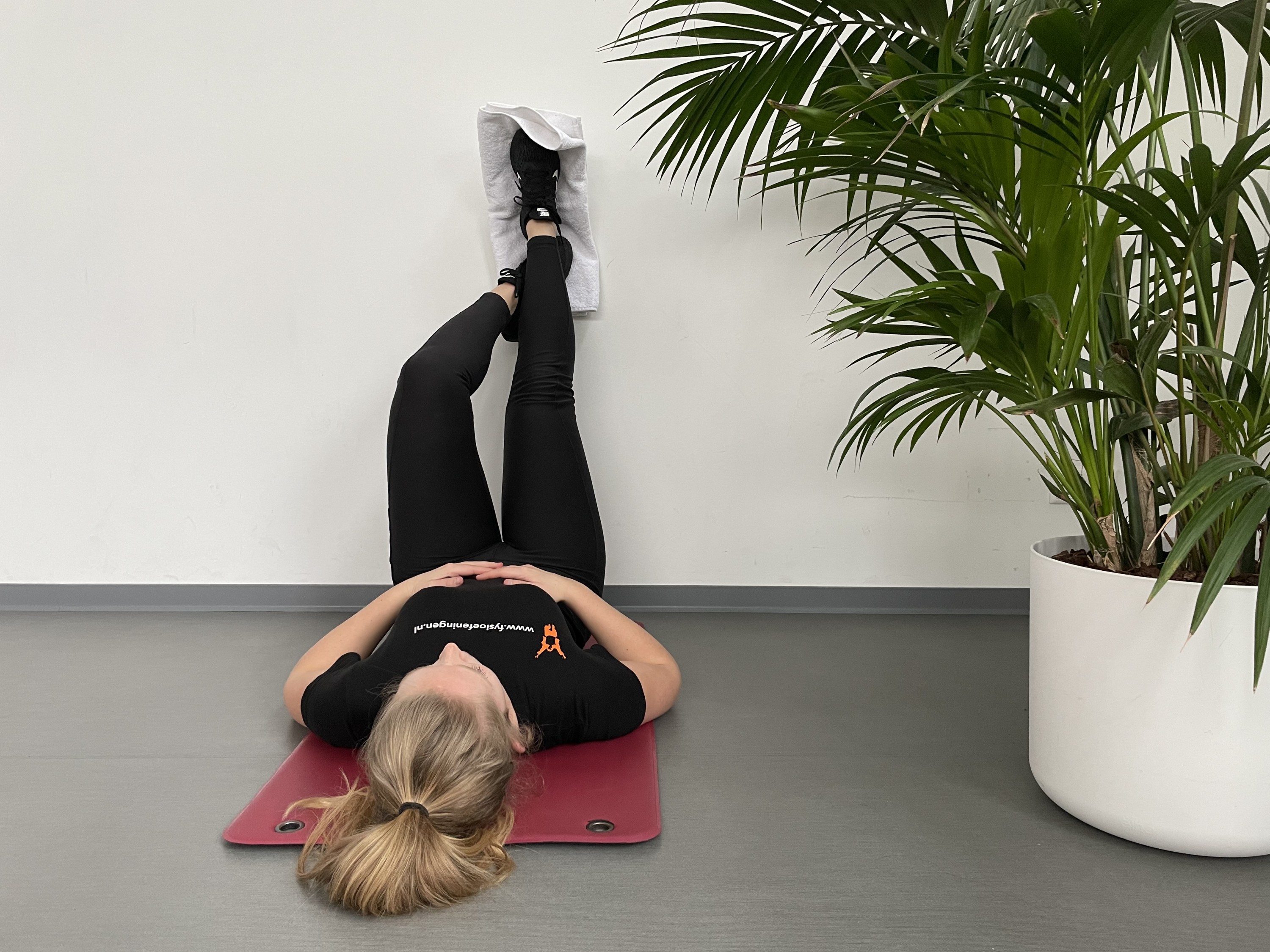
Severe knee pain
Knee pain is very common. If you experience many complaints (high reactivity), it is important to do a lot of movement exercises. You will find these below.
1. One leg Hamstring Slide
Ga op je rug liggen en leg een handdoek onder je voet. Schuif 1 been naar voren toe. Schuif vervolgens je been weer terug. Herhaal deze beweging en wissel daarna van been.
2. Quardiceps passief met handdoek
Begin in ruglig met uw heupen en knien in 90 graden. Plaats uw voeten tegen de muur de muur op de handdoek (niet aangedane been onder het aangedane been). Begin vanuit deze positie met het op en neer schuiven tegen de muur.
3. Knie strekken in zit
Ga op een stoel zitten, strek vervolgens één been langzaam uit naar voren, breng hem vervolgens langzaam terug.
Fitness mat
Hard. Compact. Qualitatively.

The meaning of severe knee pain
Knee pain is quite common. When your knee is very painful we speak of a highly reactive knee. Swelling can be present and this may make knee movement more restricted.
The causes of severe knee pain
A highly reactive knee can happen due to an acute traumatic moment. Think of a torn cruciate ligament, medial ligament (MCL) or lateral ligament (LCL) tears, meniscal tears or injuries to the surrounding tendons. The acute moment can cause damage and that causes inflammation.
The quality of the knee joint can also deteriorate due to normal aging processes. Increased friction due to degenerative changes of the cartilage (osteoarthritis) can cause knee pain.
The symptoms of severe knee pain
Stabbing pain at the side or top of the knee radiating to the back of the knee and shin are commonly felt when suffering from a highly reactive knee. Tingling or pins and needles can be present around the knee. Other common symptoms include stiffness, aching, swelling redness and restricted movement. Turning the knee under load, climbing stairs, kneeling, crouching, heavy lifting, walking or prolonged standing can be aggravating factors. Moving within the pain free range usually eases the pain.
The treatment of severe knee pain
In the phase when the knee is very painful (highly reactive) there is a big difference between loading and moving the knee. With loading we mean turning the knee under load, climbing stairs, kneeling, crouching, heavy lifting, walking or standing for too long. This should be avoided during this phase due to the inflammation and damage that is likely present in the knee. Movement is always recommended as long as it is unloaded. The movement helps with getting blood flow to the injured area aiding the recovery process. When trying unloaded movements, make sure you have the painful leg supported (for instance with your arm or a towel).
Synonyms
Severe pain in the knee, knee pain, knee arthritis, knee osteo, knee OA
Advice
If you have any questions regarding the exercises, doubt if you are doing them correctly or aren’t sure they are suited for your condition, please contact your physiotherapist for support.
Attention:
Yourbody.coach offers a range of exercises. Yourbody.coach can not be held responsible if you develop injuries. Always consult your physiotherapist or specialist.